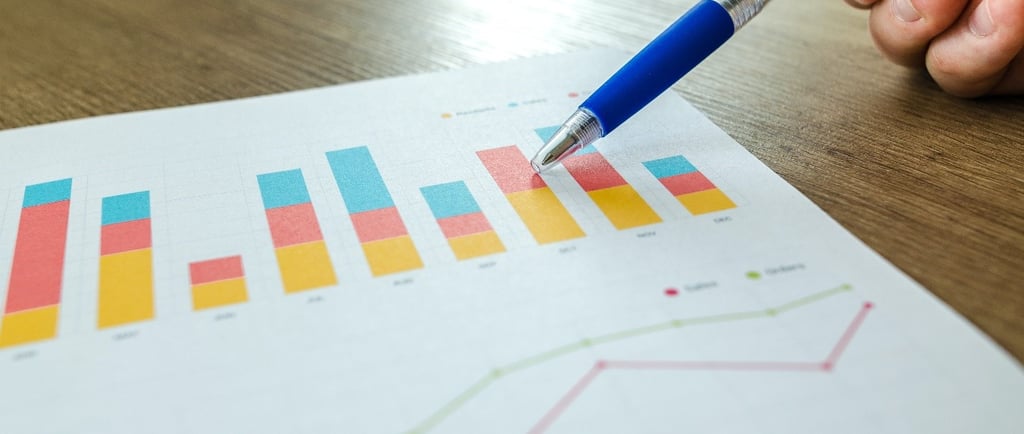How to Read Financial Statements Part 2 of 4 - The Income Statement
One of the most important of the financial statements is the Income Statement. This is where the profitability for a specific period is explained. The income statement, also known as the profit and loss (P&L) statement, summarizes the cumulative impact of the revenue and expenses for a given period. The document is normally shared as part of the quarterly and annual reports, but it may also be for just one period such as one month.
David Parham
4/23/20243 min read


DISCLAIMER - I am not a Financial Advisor and do not work for any Brokerage Firm. The opinions given are of my own and are not to be used as professional advice. These are my findings and can hopefully help you to make informed decisions on investing. Consult a Broker or Lawyer before making any investment.
How to Read Financial Statements - Part 2
The Income Statement
Each passing year proves that we must know what we are buying when purchasing Stocks. The markets are demanding and we need to understand how we are investing our money, SUCCESS demands that we analyze very carefully.
We started our study on reading financial statements last week beginning with the balance sheet. If you missed that article, I suggest reading it before proceeding into part 2 which will be the income statement.
Article on reading the balance sheet which was part 1 of reading financial statements.
How to Read Financial Statements – Part 1
One of the most important of the financial statements is the Income Statement. This is where the profitability for a specific period is explained.
The income statement, also known as the profit and loss (P&L) statement, summarizes the cumulative impact of the revenue and expenses for a given period. The document is normally shared as part of the quarterly and annual reports, but it may also be for just one period such as one month.
Income Statements include the following elements:
· Revenue – Amount of money the company took in
· Expenses – Costs incurred by the company
· Costs of goods sold (COGS) – these are the parts it takes to make the things the company sells
· Gross Profit – The Total Revenue less the COGS
· Operating Income – Gross profit less operating expenses
· Income before taxes – Operating income less non-operating expenses
· Net Income – Income less taxes
· Earnings Per Share(EPS) – the net income divided by the total number of the outstanding shares
· Depreciation Expenses – These are costs associated to aging your equipment/assets over time
The income statement is the most critical of all the financial statements. The two main statements, the balance sheet, and income statement are similar but totally different. The balance sheet records the assets, liabilities, and equity. The income statement shows all the income and expenses. (Profitability of the company for a specified period.)
You find all revenue and expense accounts within an income statement for a separate period. This allows comparisons for similar past periods. With this statement, you can determine whether the business is generating a profit. This also allows the company to compare figures to budgets and/or profit projections.
There are two methods to review financial documents: vertical and horizontal.
Vertical Analysis
Vertical refers to the method of analysis where each line item is listed as a percentage of the base figure within the statement. This means all the line items are stated in percentages of gross sales, normally in dollars. You read down the single column and see the relative size of different expenses to the gross sales.
This makes it easy to compare different periods and companies in the same industries. It helps to determine performance metrics.
Horizontal Analysis
Horizontal analysis reviews and compares changes in the dollar amounts in a company’s financial statements over multiple reporting periods. Sometimes it can be also used in percentages, but normally it is used for absolute comparisons.
The horizontal analysis makes financial data and reporting consistent per generally accepts accounting principles (GAAP). It improves the review of a company’s consistency over time, as well as its growth to competitors. You can use this to identify changes/trends over periods of time.
Of course in certain situations, both Vertical and Horizontal analysis are beneficial.
In conjunction with the cash flow statement (which we will cover next), balance sheet, and annual report, income statements help company leaders and investors understand the full picture of a business’s operational results. It allows us to see the value and efficiency of the company and if the company is moving in the right direction in regards to market share and profitability in relation to others in competition with the company.
Determinations can be made as to whether costs are rising or falling, as well as if sales are improving over prior periods.
We will do part 3 on reading financial statements next, covering the Cash-Flow Statement.
Contact
davidparham@lifecanbesimple.net
Follow
Connect with Us
+1 940-730-5105